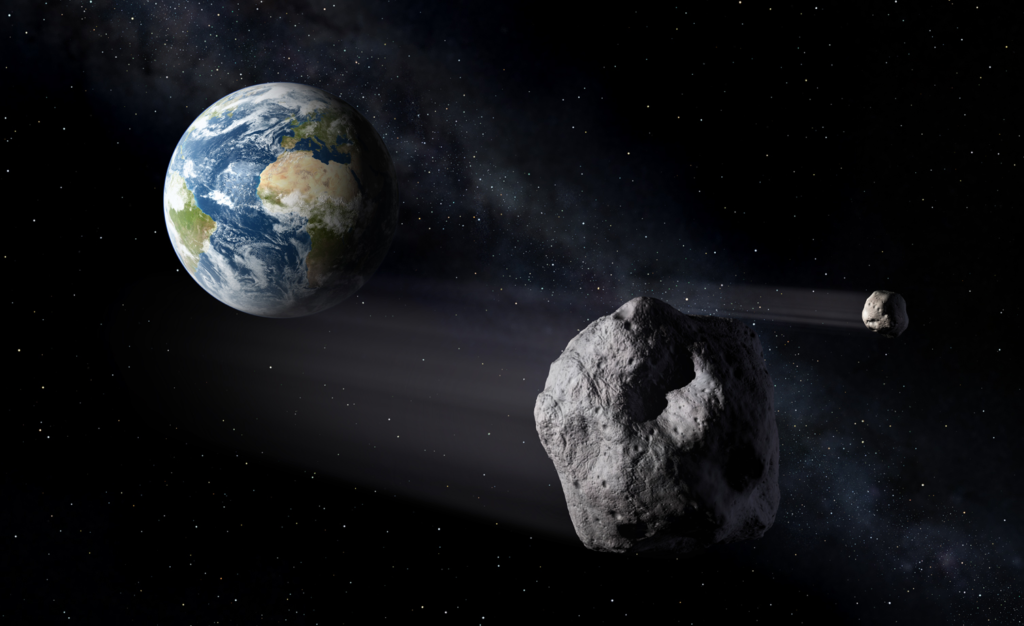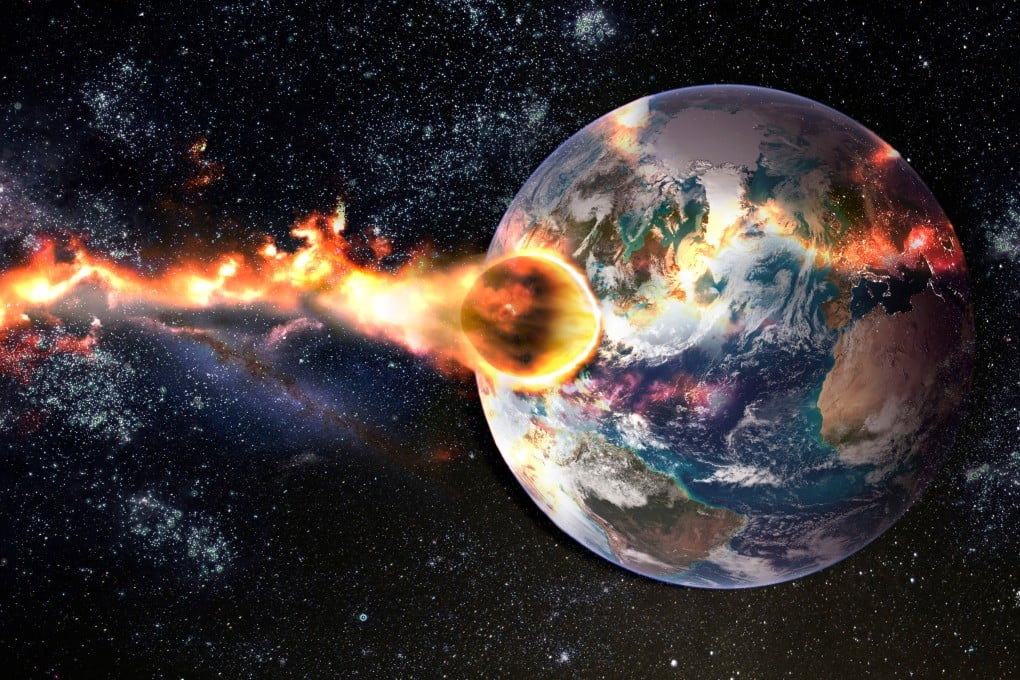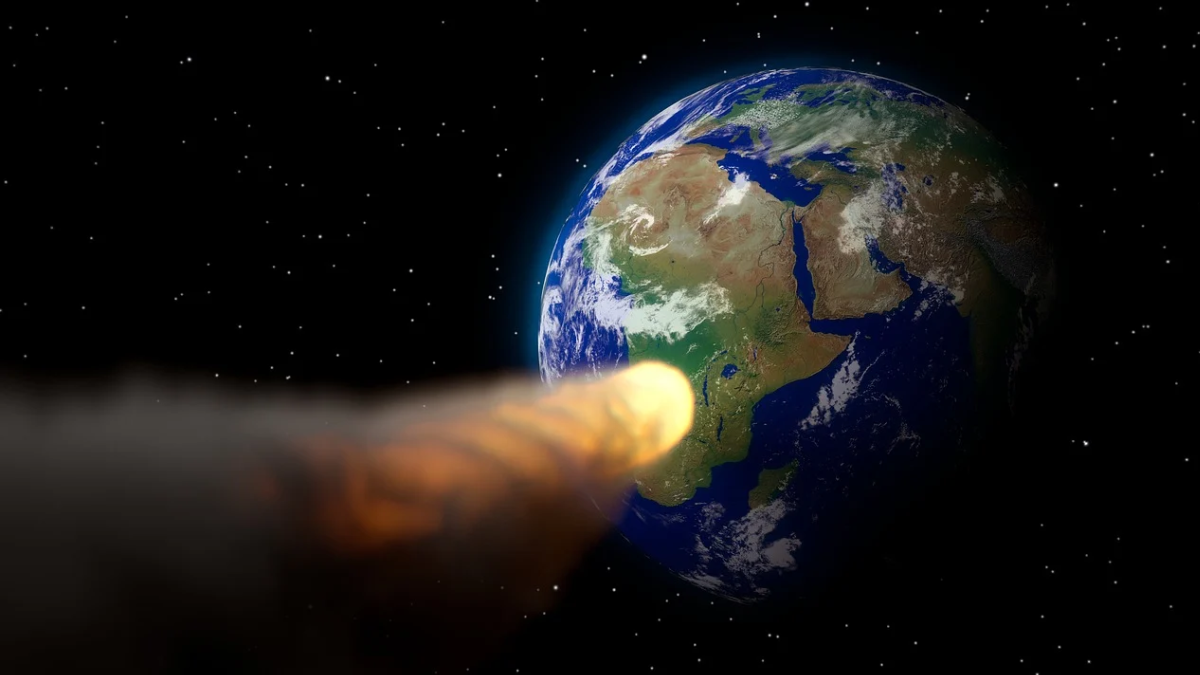A nuclear bomb could be humanity’s last line of defense against a massive asteroid hurtling toward Earth. Scientists have long studied various methods for protecting the planet, and new research suggests that a nuclear bomb might be the most effective way to deflect a life-threatening asteroid.
This concept was recently tested in a laboratory by using X-rays on a marble-sized “mock asteroid,” which provided valuable insights into how a nuclear bomb could be used in space to prevent an extinction-level event.
In 2022, NASA successfully tested its planetary defense capabilities with the DART mission, where a fridge-sized spacecraft crashed into a 160-meter-wide asteroid and knocked it off course.
Read : Russia to Strike on Nuclear Facilities of Ukraine Before Winter
However, a nuclear bomb may be necessary for much larger asteroids, especially those the size of the one that wiped out the dinosaurs 66 million years ago.
The Potential of a Nuclear Bomb to Save Earth
The biggest real-life test of our planetary defenses was the DART mission, but scientists believe that simply smashing a spacecraft into a large asteroid may not be enough. A nuclear bomb, on the other hand, could vaporize part of an asteroid and propel it off course.
Read : List of Countries with nuclear weapons
This method was tested in a proof-of-concept study published in Nature Physics, where US scientists conducted an experiment at Sandia National Laboratories using the world’s largest X-ray machine. The focus was to understand how a nuclear bomb could deflect an asteroid using X-rays.
Much of the energy released in a nuclear explosion is in the form of X-rays, and in space, where there is no air, the absence of a shockwave or fireball doesn’t reduce the bomb’s effectiveness. Instead, the X-rays from the nuclear bomb could vaporize part of the asteroid, turning it into a “rocket engine” that propels it away from Earth.
This approach was confirmed in the experiment, and scientists were able to calculate that a nuclear bomb could deflect an asteroid up to four kilometers wide, given enough notice.
How a Nuclear Bomb Could Work in Space
In the laboratory experiment, X-rays were used to vaporize the surface of a mock asteroid. This vaporization propelled the asteroid in the opposite direction, turning it into a self-propelled object.

This experiment confirmed long-standing theories about how a nuclear bomb might deflect an asteroid in space, and the results were promising. The mock asteroid reached speeds of 250 kilometers an hour, providing further evidence that this approach could work.
A nuclear bomb could serve as a powerful tool in planetary defense, especially for larger asteroids. While smaller asteroids like the one targeted by the DART mission can be deflected by spacecraft impacts, larger ones require more energy.
The nuclear bomb would be detonated a few kilometers away from the asteroid, vaporizing part of its surface and using the released gases to push the asteroid off course. This process would need to take place millions of kilometers away from Earth to be effective and safe.
The experiment involved modeling the potential of a one-megaton nuclear bomb, though larger nuclear devices, such as the 50-megaton Tsar Bomba, have been tested in the past.
The scientists behind the experiment believe that this technique could be used to deflect even the largest asteroids, like the 10-kilometer-wide Chicxulub asteroid, which caused mass extinction on Earth millions of years ago.
Challenges and Uncertainties of Using a Nuclear Bomb
While the recent experiments offer hope, many uncertainties remain. Asteroids, as scientists have observed, come in many forms. For example, the asteroid targeted by NASA’s DART mission, Dimorphos, turned out to be a loosely held-together pile of rubble rather than a solid rock. The varying compositions of asteroids make it difficult to predict how a nuclear bomb would affect different types of space objects.

Moreover, testing this theory with an actual nuclear bomb is impossible due to international treaties and the high costs involved. This means that scientists must rely on simulations, lab experiments, and smaller-scale tests to understand how effective a nuclear bomb would be.
The European Space Agency’s Hera mission, launching soon, will collect more information on asteroids’ composition and how they react to impacts like those from the DART mission.
However, despite these challenges, scientists like Mary Burkey from Lawrence Livermore National Laboratory, who was not involved in the study, have praised the new research.
Burkey, who has run computer simulations on this topic, believes that the recent experiments increase the credibility of using a nuclear bomb to defend Earth. Her simulations, along with this new data, suggest that such a mission could indeed be an effective way to protect the planet.
Nevertheless, timing would be crucial. Deflecting an asteroid with a nuclear bomb would require early detection of the asteroid, and the bomb would need to be detonated with enough time for the deflection to take effect.
The trajectory of the asteroid would need to be altered significantly to ensure it no longer poses a threat to Earth, and this would require careful planning and coordination on a global scale.

The Future of Planetary Defense
While there is no immediate threat of an asteroid strike, scientists continue to explore different methods of protecting Earth. The nuclear bomb remains a last-resort option, but its potential has been confirmed through lab experiments like the one conducted at Sandia National Laboratories. With advances in technology and planetary defense strategies, humanity may have a chance to avoid the fate that the dinosaurs faced.
However, the idea of using a nuclear bomb to deflect an asteroid is still in its early stages. There are many factors to consider, including the size, speed, and composition of the asteroid, as well as the timing of the mission. Additionally, international cooperation would be required to carry out such a mission, as launching a nuclear bomb into space would raise significant political and safety concerns.
Despite these challenges, the recent experiments have given scientists hope that a nuclear bomb could indeed be a viable option for deflecting a life-threatening asteroid. As planetary defense efforts continue, this research represents a significant step forward in our ability to protect the Earth from cosmic threat.

